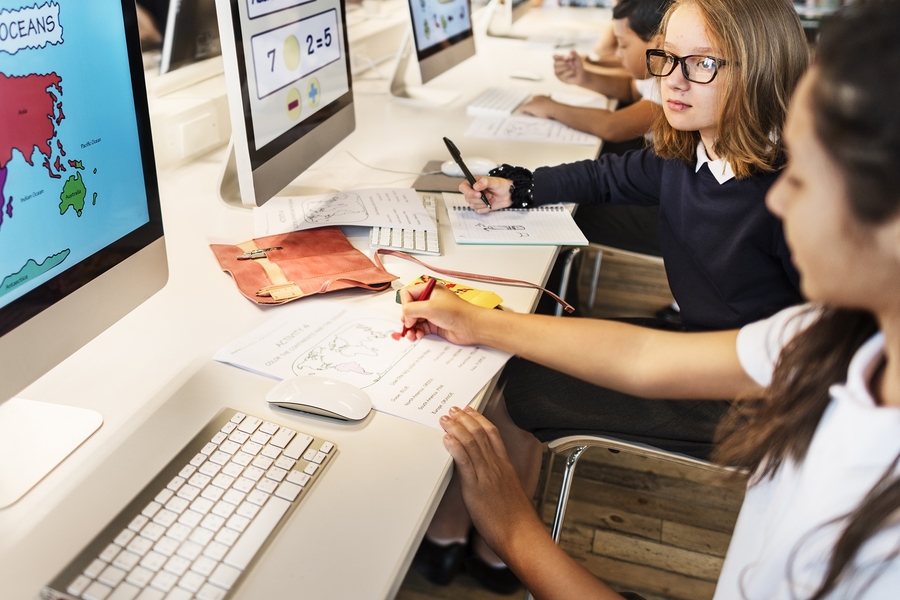Important Resources for Organizations to Improve Their Method to Technology Education
As institutions aim to boost their modern technology education structures, the recognition and implementation of necessary sources end up being vital. Innovative educational program designs that integrate innovation, along with reliable on-line discovering systems, can considerably expand instructional access and involvement.
Cutting-edge Curriculum Styles
In today's swiftly developing technical landscape, instructors are progressively identifying the need for innovative educational program layouts that efficiently integrate innovation into discovering experiences. This combination is essential for preparing pupils for a future where electronic proficiency is vital. Ingenious educational program designs include numerous instructional approaches, guaranteeing that innovation acts as a device for boosting engagement and helping with deeper learning.
One reliable approach is project-based understanding (PBL), where pupils take part in real-world troubles, utilizing technology to research, team up, and offer their findings. This approach not just fosters critical reasoning yet additionally motivates the advancement of soft skills such as teamwork and interaction. Furthermore, adaptive learning technologies can individualize the academic experience, providing to private understanding designs and rates.
Furthermore, interdisciplinary methods that mix subjects, such as combining scientific research and technology with the arts, aid produce a more alternative learning setting. This promotes imagination and innovation, gearing up pupils with the skills needed to grow in a complicated, interconnected world. Eventually, innovative educational program designs are vital for growing a generation of students who are not just efficient in innovation yet are also proficient problem solvers and important thinkers.
Online Learning Platforms
Several instructors are turning to on-line learning systems as essential tools for enhancing academic access and interaction. These systems facilitate a hybrid knowing setting that accommodates diverse discovering designs and rates, making education a lot more inclusive. They use an array of sources, including video clip talks, interactive simulations, and conversation forums, allowing students to gain access to content from anywhere any time.
Prominent online understanding platforms, such as Coursera, edX, and Moodle, give organizations with the framework needed to provide top notch modern technology education. These platforms can be customized to align with specific educational program objectives and instructional techniques, making sure that organizations can preserve their educational standards while leveraging electronic resources.
In addition, online knowing platforms sustain cooperation amongst educators and pupils, cultivating a feeling of neighborhood and shared discovering experiences. Advanced analytics tools readily available on these platforms allow teachers to track student progress and engagement, helping with timely interventions when necessary.
Professional Growth Opportunities
Continuous specialist advancement is critical for teachers seeking to stay abreast of arising technologies and instructional techniques in a rapidly advancing academic landscape (AI Tools). To effectively integrate modern technology right into the class, educators should actively seek chances that boost their abilities and understanding
Institutions must prioritize supplying seminars, workshops, and training courses focused on the newest technological innovations and training methods. These programs can deal with numerous facets of innovation education, consisting of coding, electronic literacy, and using academic software. Additionally, partnering with local colleges and technology companies can supply instructors accessibility to specialized training and resources.
Online expert growth platforms likewise provide versatility, allowing teachers to involve in self-paced understanding. Webinars and digital conferences can assist in knowledge sharing among teachers worldwide, promoting an international viewpoint on modern technology combination.
Moreover, mentorship programs can link experienced instructors with those brand-new to modern technology, promoting joint learning and support. By creating a society of constant understanding, establishments can equip teachers to accept ingenious mentor methods, eventually improving trainee interaction and success in innovation education. Purchasing expert advancement not only benefits teachers yet likewise substantially enhances the discovering experience for trainees.
Collective Tools and Resources
Effective integration of modern technology in education and learning additionally relies upon making use of collective tools and resources that facilitate interaction and click reference team effort among educators and pupils. Such devices boost interaction and promote a culture of partnership, critical for modern-day discovering atmospheres. Systems like Google Work Space and Microsoft Teams make it possible for real-time file sharing, project monitoring, and smooth communication, permitting groups to interact properly despite geographical barriers.
Furthermore, learning management systems (LMS) such as Canvas and Moodle supply structured environments for link cooperation, where educators can produce online forums, assign group tasks, and help with conversations. These platforms not just streamline educational delivery however also motivate peer-to-peer communication, crucial for developing critical reasoning and analytical abilities.
Moreover, tools like Padlet and Trello can be used to envision ideas and handle jobs collaboratively, boosting project-based learning experiences. By including these joint sources, organizations equip both trainees and instructors to add proactively to their learning journeys. Ultimately, the efficient usage of joint devices not just improves the instructional experience however additionally prepares pupils to thrive in a progressively interconnected world.
Neighborhood and Market Collaborations
Area and sector partnerships play a vital function in improving technology education by connecting the gap in between academic understanding and useful application. These cooperations supply students with real-world experiences, enabling them to use classroom concepts to actual difficulties dealt with by organizations. By engaging with local businesses and area companies, universities can produce dynamic learning environments that foster innovation and ability growth.

Moreover, these alliances can bring about resource sharing, where institutions take advantage of industry technology, experience, and financing. Such assistance not only improves educational offerings yet likewise helps to cultivate a workforce that is well-prepared for the obstacles of the modern-day economic situation. Inevitably, the synergy produced via community and sector partnerships is crucial find for fostering a culture of continuous learning and adjustment in technology education, making sure that institutions remain responsive to developing technological landscapes.
Final Thought

One effective technique is project-based understanding (PBL), where trainees engage in real-world problems, making use of innovation to research, work together, and present their searchings for. Furthermore, adaptive understanding innovations can personalize the academic experience, catering to private knowing designs and speeds.
In addition, mentorship programs can link experienced teachers with those new to technology, promoting joint knowing and assistance. By creating a culture of continuous understanding, organizations can encourage educators to welcome innovative training techniques, inevitably enhancing trainee interaction and success in modern technology education. Inevitably, the harmony developed via community and market collaborations is vital for fostering a culture of continuous discovering and adaptation in innovation education and learning, guaranteeing that establishments remain receptive to progressing technical landscapes.